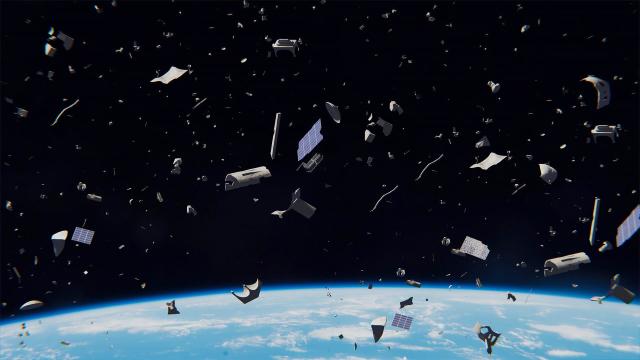Hundreds of spacecraft fragments threaten big problems
A Japanese startup decided to clean up a little in space and launch a device for cleaning up space debris. Scientists have already delivered their device to Baikonur to send the device into space in March along with the Soyuz spacecraft. By the way, not only the Japanese are concerned about the purity of the Universe, because the problem of space debris is serious and can threaten all the inhabitants of the Earth. What space debris consists of and how it is proposed to deal with it — read the material "Izvestia".
Well, what is it, Elon Musk!
Space exploration is not only a series of brilliant discoveries, but also its reverse and unsightly side-garbage. And there is enough of it. In 2019, the research center of the Air and Space Forces of the Russian Defense Ministry announced an approximate figure: about 1.25 billion particles of small space debris ranging in size from a millimeter to 10 centimeters revolve around the Earth. In Roscosmos told about 600-700 thousand objects that threaten orbiting spacecraft. According to the British company RS Components, the amount of space debris in 2020 in orbit around the Earth approached 30 thousand units (meaning large specimens). These are fragments of satellites and ships (for example, the recently identified upper-stage accelerator of the American Centauri rocket) that never left orbit and did not burn up in the Earth's atmosphere. Small fragments can reach speeds of 7-8 to 10-15 km / s — more than 10 times faster than a bullet, which can threaten the operation of satellites, spacecraft and the station. So, shuddering from the next news about the "approaching meteorite", relax — until it reaches, more than one generation will grow old. There would be no drowning in the garbage. The ISS periodically has to adjust its altitude to avoid debris. Rumor has it that the total mass of man-made objects lost in space is 215 tons!
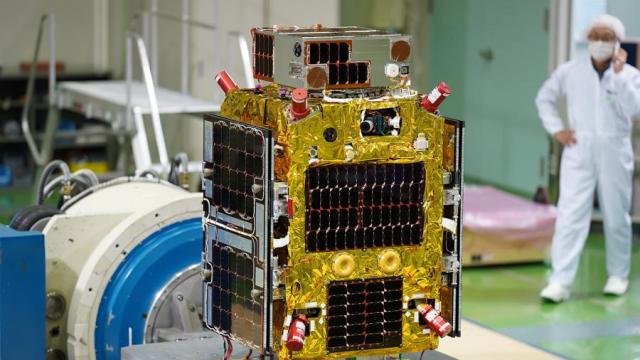
Japan's ELSA - d spacecraft to eliminate space debris
Image Source: Photo: flickr.com/Astroscale
"Most space debris is created during explosions or collisions of spacecraft," cosmonaut Alexander Misurkin wrote on his Facebook page. - Also, one of the major sources of space debris is the testing of anti-satellite weapons. So, in 2007, China destroyed its fengyun-1C satellite with a medium-range missile. After the destruction of the satellite, 3,300 pieces of space debris were added to the NORAD catalog (the register of space objects maintained by the North American Aerospace Defense Command), which increased the catalog by a quarter — and this in one incident!»
By the way, the world-famous Tesla Roadster with a dummy passenger was also recognized as garbage. Such it was considered by the astronomer of the Harvard-Smithsonian Center for Astrophysics Jonathan McDowell, who compiled a catalog of space objects of artificial origin. The list, along with the electric car, includes satellites, broken equipment and things forgotten by astronauts (more than 54 thousand objects in total). Elon Musk himself believes that his car will travel for billions of years, but some scientists doubt this and predict that the Tesla Roadster will fall apart much earlier than the allotted time — due to cosmic radiation. However, skeptics put the car service life of only a year, and the Tesla Roadster is still in service. At the time of writing, the car plowed through space more than 57 million km from Earth and at a speed of almost 31 km / s. Where the supercar is now, you can see here.
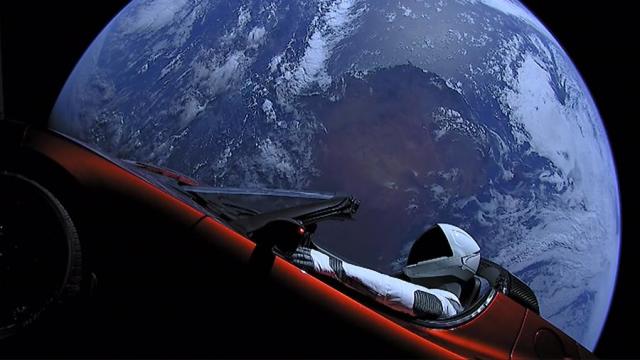
Illustration of a Tesla Roadster
Image source: Photo: Global Look Press/ZUMA Press/SpaceX
By the way, the director of the European Space Agency Jan Werner calls for a general change in the current practice of launching satellites and oblige countries to clean up after themselves.
"Imagine how dangerous it would be to sail on the high seas if all the ships ever lost in the history of navigation were still floating on the surface of the water," Werner once remarked.
See the " Black Knight»
In some delayed perspective, an excess of space debris can lead to the so — called "Kessler effect", when fragments of old and failed satellites and other "scrap" will collide and fall apart, and those, in turn, will disturb other "spare parts" hanging in space-with the same result. And this avalanche will eventually litter the orbit so that neither a rocket can be launched into space, nor a satellite. And we didn't want the rain of satellite debris to fall on our heads. Scientists know about the situation of about 18 thousand people. man-made objects, and exactly how many of them are invisible? In the near future, there will be even more objects: it is planned to launch 12 thousand Starlink vehicles alone (and subsequently increase the grouping of spacecraft by another 30 thousand).) What should I do?
The Japanese company Astroscale hopes to solve the problem with a small rectangular satellite (110 cm wide and 60 cm long) with magnetic panels that will attract all the debris. As part of the planned tests in the spring of 2021, this satellite should collect simulated debris, and then enter Earth's orbit and burn up along with all the magnetized good.
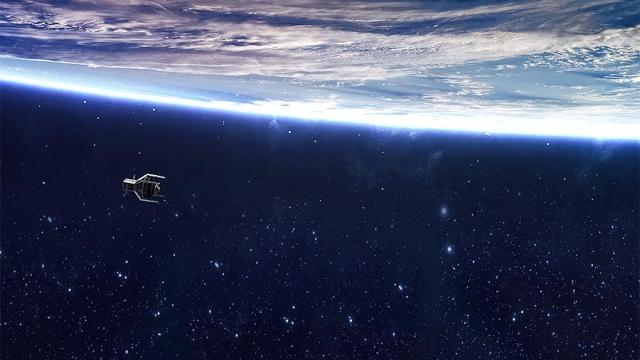
ClearSpace-1 illustration with the captured part of the Vega launch vehicle
Image source: Photo: ESA
Europeans are also worried about cleaning in orbit. So, the artificial satellite RemoveDEBRIS, developed by British engineers, went into space in 2018 and successfully caught two demonstration targets of different calibers at once-on an improvised harpoon and with the help of a special network. Its mission will be continued by the Swiss startup ClearSpace-1-in the summer of 2020, work began on the design of the spacecraft's systems for cleaning up space debris. The space janitor will have to recognize the object with the help of sensors, approach, grab the garbage with four manipulator hands and remove the collected trash from orbit. The device is not yet there, but the goal is already there — the target will be the spent stage of the European Vega rocket. General cleaning is planned for 2025.
By the way, space debris collection technologies will help not only to clear the horizons and save the Earth from potential disasters, but also, perhaps, to see amazing things — for example, the mysterious "Black Knight". Legend has it: we are being watched from space (or even sent signals) by an alien spy satellite. Photo attached: the object was captured in 1998. And although the UFO in the picture recognized a piece of thermal insulation, which was lost by astronauts Jerry Ross and James Newman during the installation of modules of the future ISS, ufologists can not be forbidden to believe. And all of a sudden?
Catch in the net and on the Velcro
What about us? We are also not sitting still. In 2019, scientists of the Russian Space Systems Holding presented a project of a space debris hunter satellite (SCM). The author of the project, research engineer Maria Barkova proposed not only to collect garbage using a net, but also to process it into fuel, which will" feed " the collector.
"The fundamental difference between our solution and existing similar projects is the processing of space debris into pseudo-liquid fuel. This allows you to solve several tasks at once — to ensure waste-free destruction of garbage and the maximum period of operation of the device, as well as to minimize the cost of putting it into orbit. In fact, our device will act as a predator that hunts for garbage to get additional energy, " explained Maria Barkova.
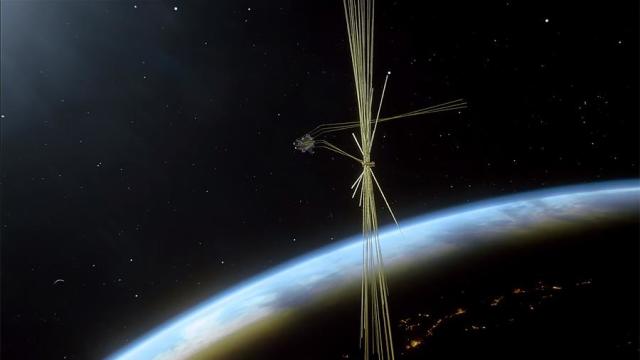
Illustration of a satellite to catch the debris
Image Source: Photo: startrocket.me
Startup starrocket offers to use simple unguided satellites weighing up to 100 kg as scavengers. All the salt is in a foam generator, similar to the one from which the mounting foam is obtained. With the help of such a device, the device, like a spider, will capture garbage with a sticky network and after some time will descend from orbit together with the"victim".
By the way, it is possible that even space debris can actually benefit. As the first Deputy Director General of Roscosmos for the development of the orbital group and promising projects, Yuri Urlichich, noted earlier, regolith and space debris may be useful for 3D printing in the future.
Elena Motrenko
